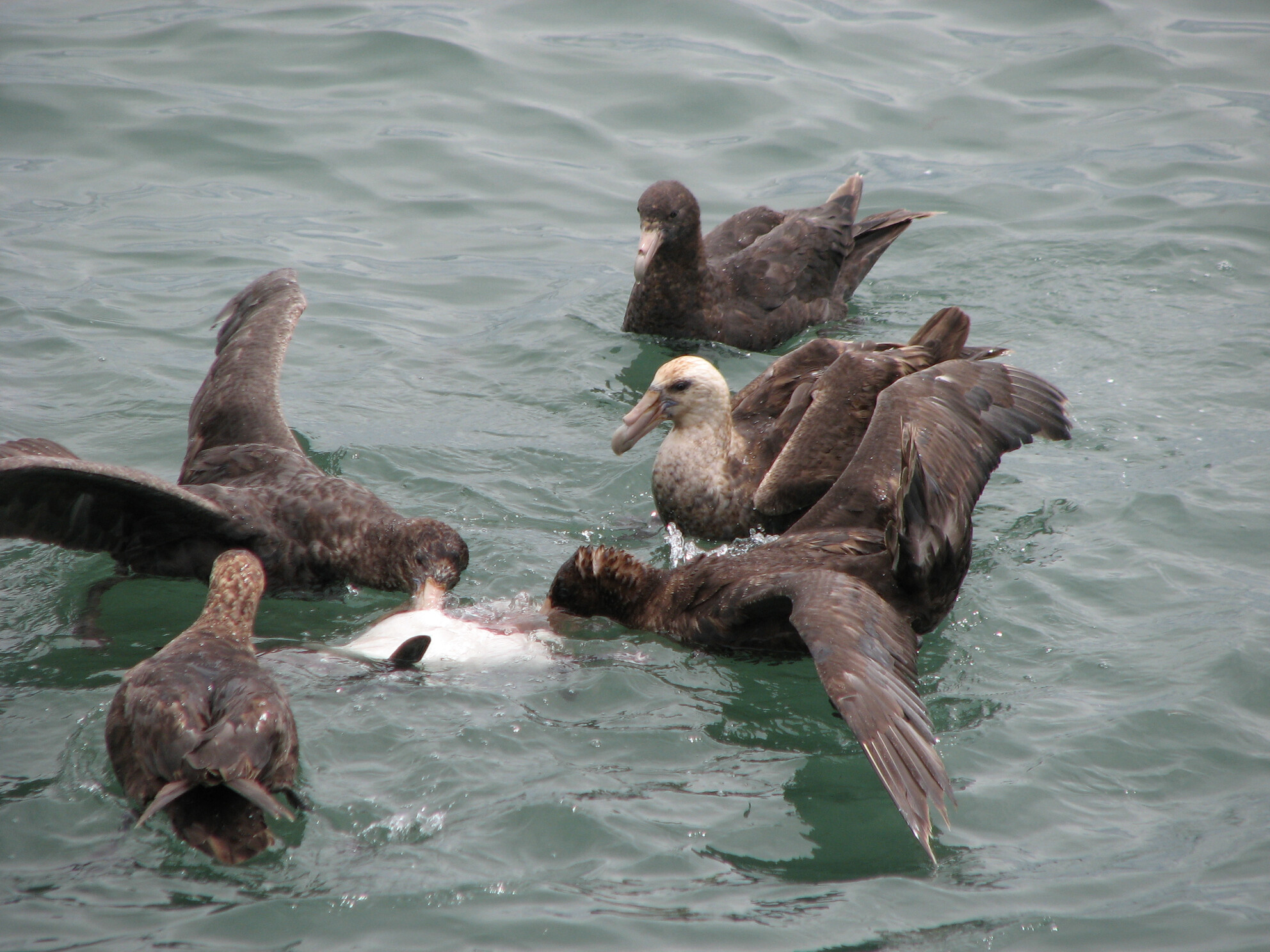 Figure 1 from the paper: Five southern giant petrels (Macronectes giganteus) feed on a dead juvenile Magellanic penguin (Spheniscus magellanicus) in the waters off of Punta Tombo, Argentina, site of a large penguin colony. Note how the two birds actively eating the penguin have their wings outstretched, and the bird on the right further has raised and fanned its tail. Note also the plumage variations among the birds, from wholly brown (likely juvenile or immature) to one with a whitish head (an adult). Photograph by Dee Boersma.
Figure 1 from the paper: Five southern giant petrels (Macronectes giganteus) feed on a dead juvenile Magellanic penguin (Spheniscus magellanicus) in the waters off of Punta Tombo, Argentina, site of a large penguin colony. Note how the two birds actively eating the penguin have their wings outstretched, and the bird on the right further has raised and fanned its tail. Note also the plumage variations among the birds, from wholly brown (likely juvenile or immature) to one with a whitish head (an adult). Photograph by Dee Boersma.
Eric L. Wagner (Center for Ecosystem Sentinels, Department of Biology, University of Washington, USA) and colleagues have published open access in the journal Ecology and Evolution on Southern Giant Petrels’ Macronectes giganteus predation of live Magellanic penguins.
The paper’s abstract follows,
“Southern giant petrels (Macronectes giganteus) are important consumers that range across the oceans throughout the southern hemisphere. In Argentina, previous studies have shown they eat primarily pinnipeds and penguins, which they are assumed to scavenge, although there are occasional anecdotes of them attacking living penguins. Here we describe a predation attempt by a trio of southern giant petrels on a molting adult Magellanic penguin (Spheniscus magellanicus) at the large colony at Punta Tombo, Argentina. We relate giant petrel attendance patterns at the colony to the penguins' phenology, showing how giant petrel numbers rise with the increasing prevalence of vulnerable penguins. We suggest that living penguins—both fledglings and adults—may constitute a more seasonally significant proportion of the giant petrel diet than previously assumed, and their capture may represent a specialized predation technique.”
Reference:
Wagner, E. L., Rebstock, G. A., & Boersma, P. D. (2024). A fearful scourge to the penguin colonies: Southern giant petrel (Macronectes giganteus) predation on living Magellanic penguins (Spheniscus magellanicus) may be more common than assumed. Ecology and Evolution. https://doi.org/10.1002/ece3.11258.
29 July 2024

 English
English  Français
Français  Español
Español